Affiliate links on Android Authority may earn us a commission. Learn more.
The iPhone is playing catch-up with Android's photos, but still leads in video
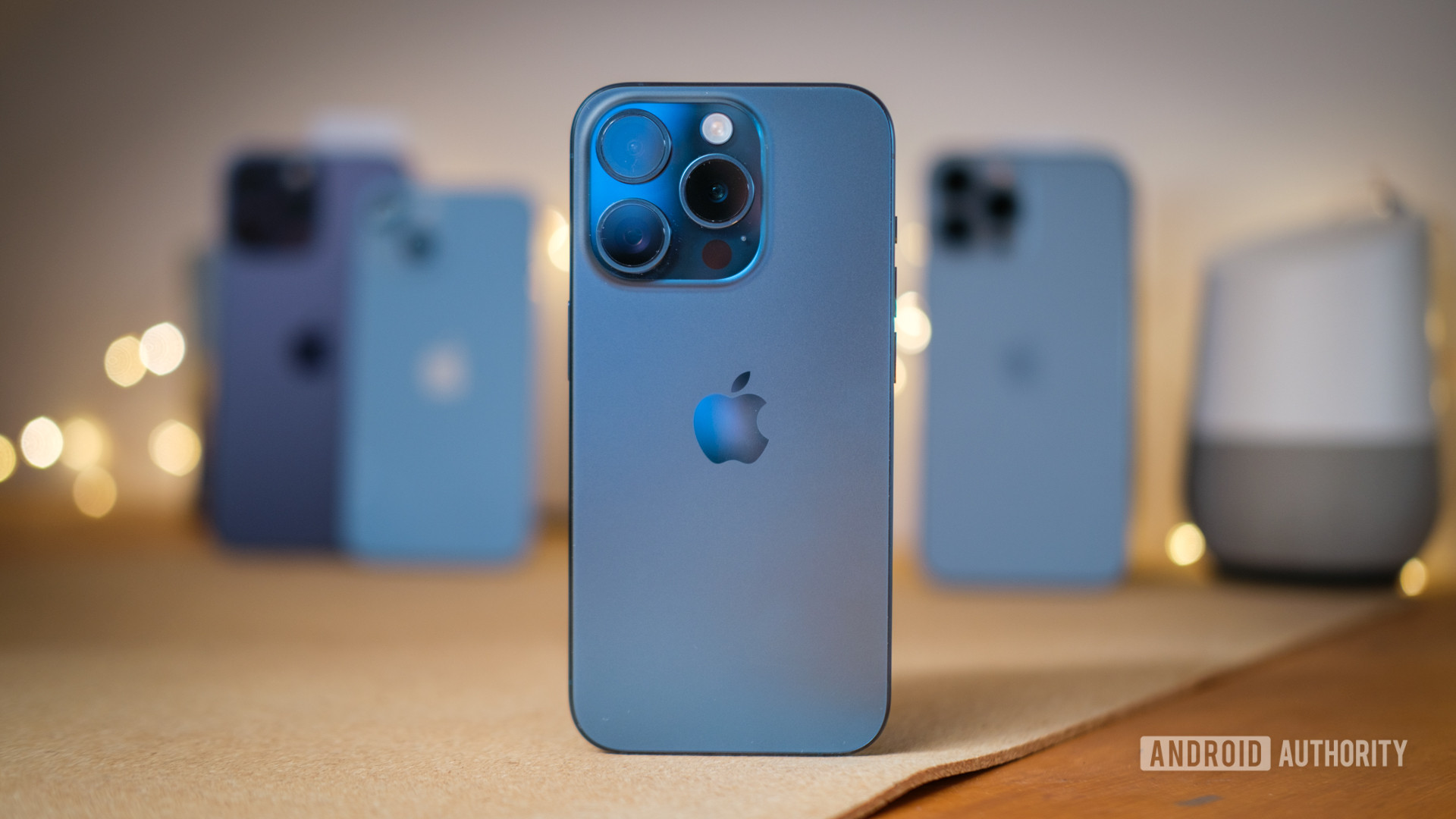
Tim Cook getting up on stage and claiming that Apple’s made the best iPhone ever is almost tradition at this point. Which if you think about it, is a pretty dumb statement to make. You wouldn’t expect any smartphone maker to make a phone worse than their previous one, would you? Every year, Apple adds some cool features on its own then takes a sprinkling of long-standing Android features, rebrands them as revolutionary, and ships them to its users.
The iPhone 15-series sticks to the script of matching Android photography features, but remains far ahead on a single front — video.
This year’s iPhone 15 series launch was no different. Pixel-binning, lossless zoom, even a periscope-style zoom lens, all the features we’ve taken for granted on Android made a showing. But for all its Android inspiration, one aspect of the iPhone remains leaps and bounds ahead of the curve, truly “the best.” And it only got better this year. Video.
Keeping up with the Androids
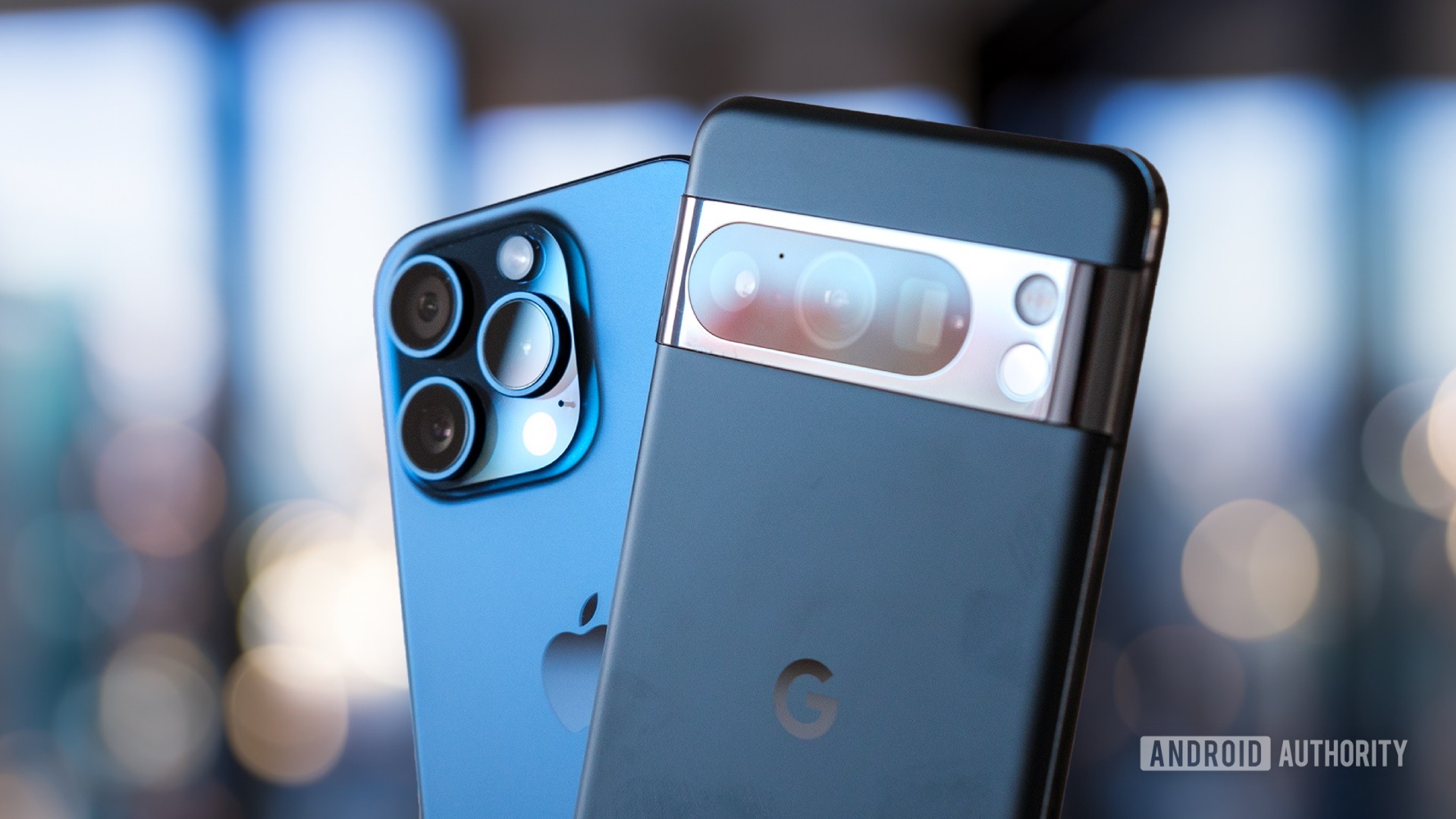
The Apple iPhone line-up has always had great cameras, though they couldn’t quite match the hardware and software prowess of the very best Android camera phones. Our iPhone camera shootout tests consistently show that Apple’s cooler color tones and iffy HDR performance leave much to be desired.
It’s no joke that it has taken the company all the way till 2022 to add a high-resolution 48MP sensor and capitalize on the benefits of pixel binning. Apple’s 2023 line-up is again tethering its camera upgrades to a 48MP sensor. Except this time, it’s making a showing across the board, including on the more affordably priced iPhone 15 models.
The results are impressive, and Apple appears to have fixed many of its older misses. For example, HDR performance has drastically improved this year, and I’ve faced far fewer instances of blown-out highlights. Similarly, while the iPhone 14 Pro struggled with oversharpening, the problem has been largely fixed this year.
Despite that, it’s hard to be impressed. The results are good but they’re not pushing the boundaries of photography tech at all. Instead of giving a significant boost to low-light photography, Apple is opting for cop-outs like a 2:1 bin for higher-resolution shots. It’s all a bit underwhelming considering the feature debuted on Android phones back in 2018, and even $200 smartphones now include 50MP and better sensors. I expected more.
It's hard to be impressed by the iPhone's inevitable resolution bump.
Apple is giving software upgrades a fair shake, too, with exciting additions like the ability to set your choice of focal length — 23mm, 28mm, or 35mm could be your defaults. Of course, this is done by cropping into the image and adding a reduced degree of binning from the full-resolution sensor.
Similarly, the iPhone will now let you change the focus point or adjust the portrait blur after taking a shot. Yet another feature we’ve already seen on Pixel phones and many other Android cameras.
But while the iPhone’s photography chops keep lock-step with the Android alternatives, videography on Apple’s smartphones took yet another leap forward.
Far ahead of the mobile-cinematography curve
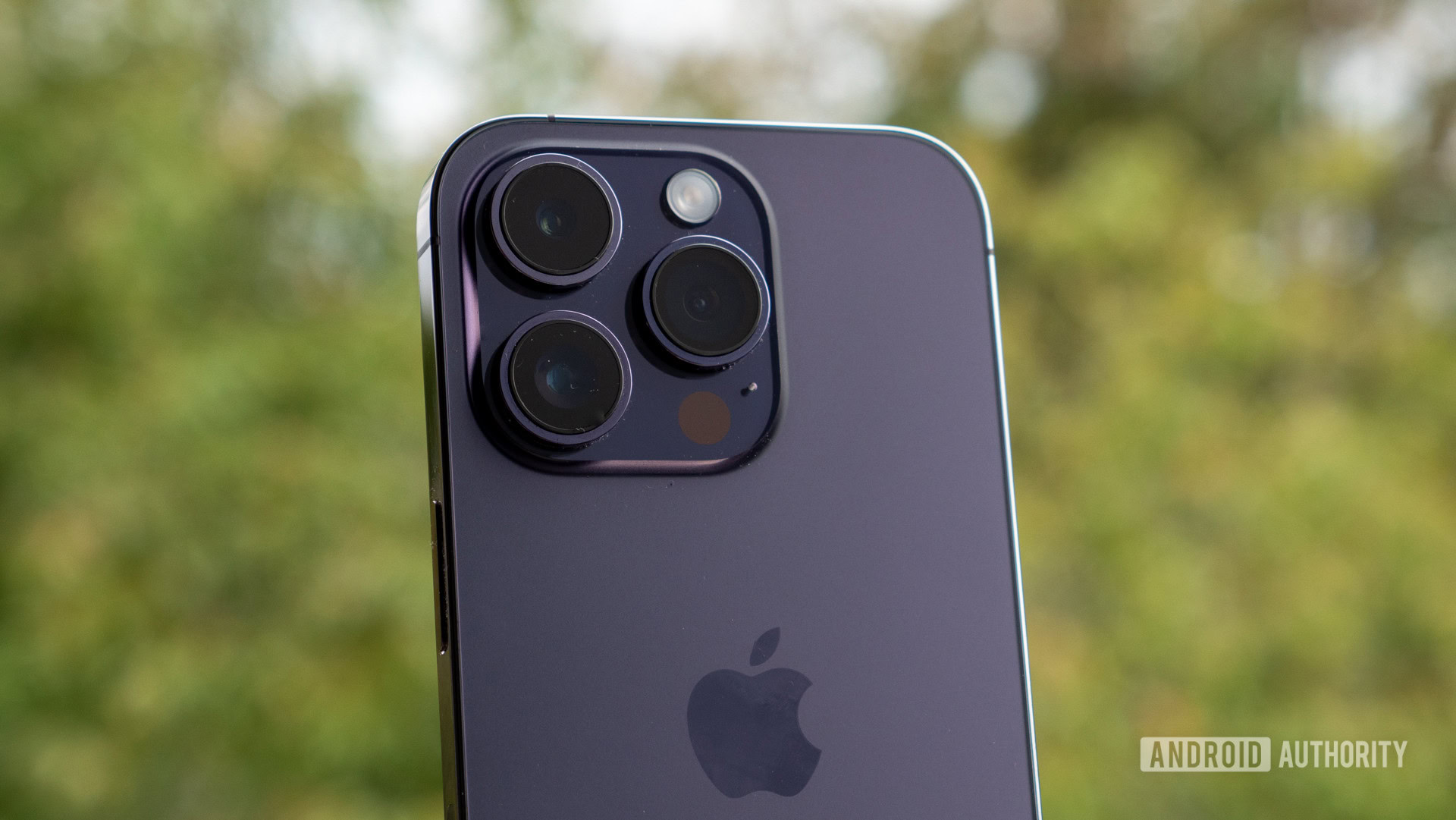
Generally speaking, iPhone video quality tends to be far ahead of Android phones. Be it in the sheer amount of detail Apple can eke out of the sensors or obvious choices like lower compression. For a company that still hasn’t perfected the art of great-looking HDR photography, Apple does an incredible job at delivering a cinematic color profile out of the box for video. Couple that with silky smooth stabilization, and you begin to see why the iPhone is the choice of videographers on the go.
This year, some of the most significant upgrades to the iPhone 15 Pro‘s video capabilities come from improved stabilization, low-light video, and action footage. Instead of creating custom test scenarios, I’ve been testing out the iPhone 15 Pro Max against the Pixel in everyday situations, and the difference in video quality is night and day. In fact, I’d say that the gulf has only gotten wider. Video on the iPhone remains brighter, but not unnaturally so. There’s more detail even in less-than-ideal conditions. And most importantly, it’s a whole lot smoother. You can see the difference in how the two phones handle stabilization. The micro jitters in the Pixel’s video completely ruin the footage for me.
I’ve also been very impressed by the iPhone’s ability to smoothen out high-action shake. The floating gimbal-like stabilization has allowed me to capture footage in instances like running a marathon, trail biking, and even climbing. Sure, the image quality takes a significant drop in less-than-perfect light, but I’ll take lower-quality but usable footage any day over unusable video.
Invariably, both features take advantage of the significantly faster neural cores on the A17 Pro chipset. Apple’s vertically aligned approach plays a significant role here. Tight integration between bespoke lenses, sensors, and the image signal pipeline is vital to improving image quality. What also makes a difference is computational overhead and speeding up the neural cores.
AI and ML-based enhancement is part and parcel of modern smartphone imaging. Phones like the Pixel 8 Pro rely almost entirely on computational algorithms to render photos far beyond the sensor’s capabilities. However, extending even a fraction of those capabilities to video capture requires a proportional increase in processing power, and few phones match the iPhone’s choice in hardware. That’s why Google has chosen to offload the upcoming Video Boost feature to its servers — the Tensor chip simply can’t handle the task.
Action Button and USB-C: A video-centric twist
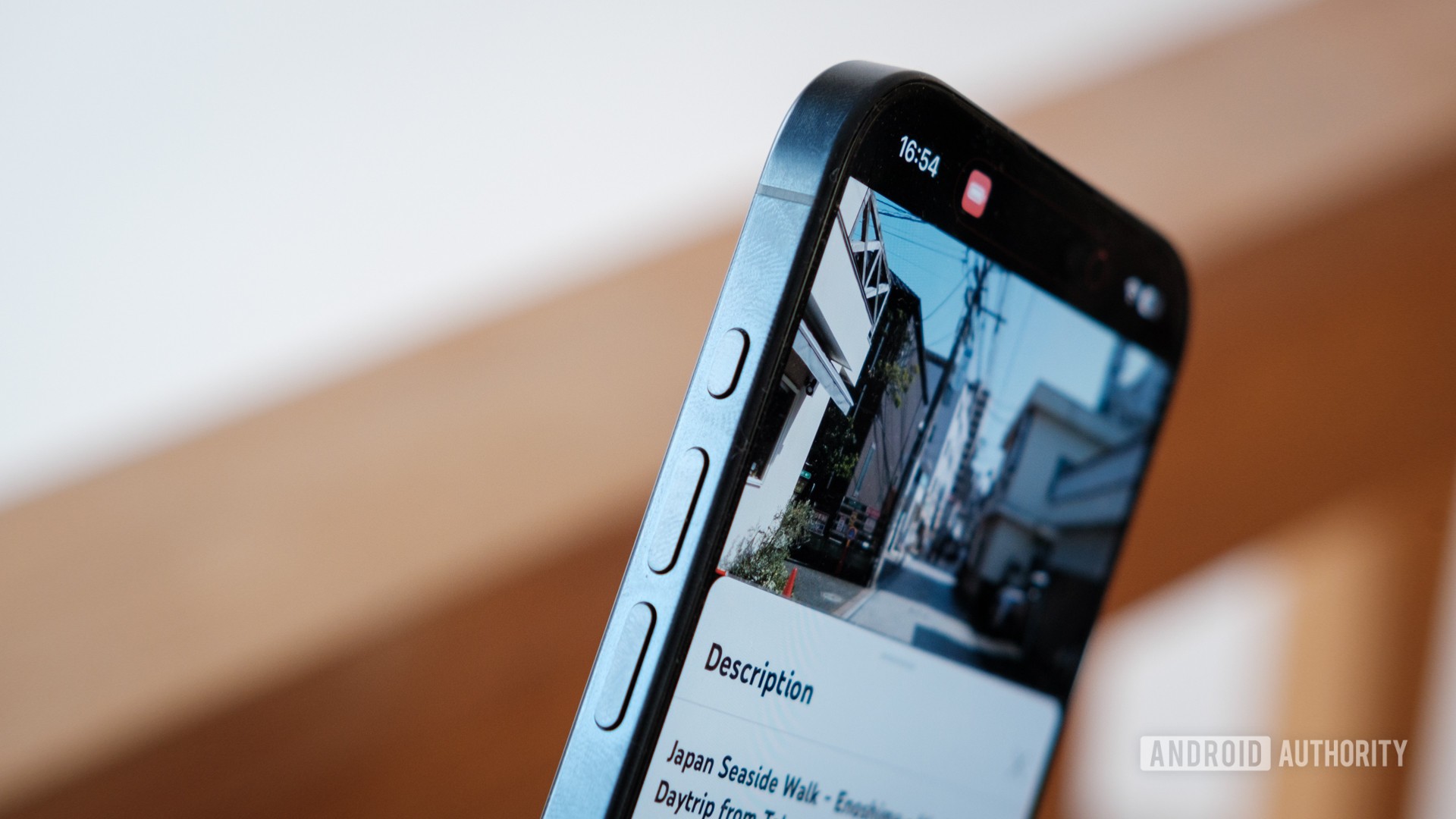
An unexpected photography improvement I’ve been enjoying is the iPhone 15 Pro’s Action Button. While it serves as a silent mode toggle out of the box, the button is ideally placed as a shutter key or shortcut to the video camera. There’s something to be said about the tactility of a dedicated shutter button, and it further adds to the camera-like experience while reducing shake when recording video. Android phones used to commonly sport a shutter button, but the feature has gone the way of the dodo. I hope the popularity of the Action Button brings it back.
Apple’s USB-C focus also has a videography bend to it. Pro users can now shoot high-res RAW video footage straight to external storage. Here’s the thing: Apple’s cinema-focused marketing might be full of hyperbole, but there is more than a grain of truth in its push toward pro-camera-like features. Pro Res video, log file recording, and cinematic modes are just some of those additions that drive the mobile video-taking experience forward.
The likelihood of an iPhone being used in a production environment is low, but it sets the stage for prosumers and for building mindshare.
Even though Apple made it a point to show off the iPhone’s video chops by shooting its recent Mac event with it, the likelihood of an iPhone being the primary camera in an actual production environment is pretty low. However, the feature set adds a meaningful upgrade for users who know how to work their way around it or want to push the limits of smartphone cameras. YouTube is full of examples of astonishingly high-quality works of cinema shot exclusively on an iPhone. Most of these would not be possible without these niche but useful features.
That helps establish Apple’s lead on video further — both in mindshare and the feature set available to regular users. In a video-first social environment, Apple’s video focus makes it a no-brainer defacto choice, much like the Pixel has built itself a niche among smartphone photographers.
The iPhone isn’t the only player, but it’s leading by a country mile
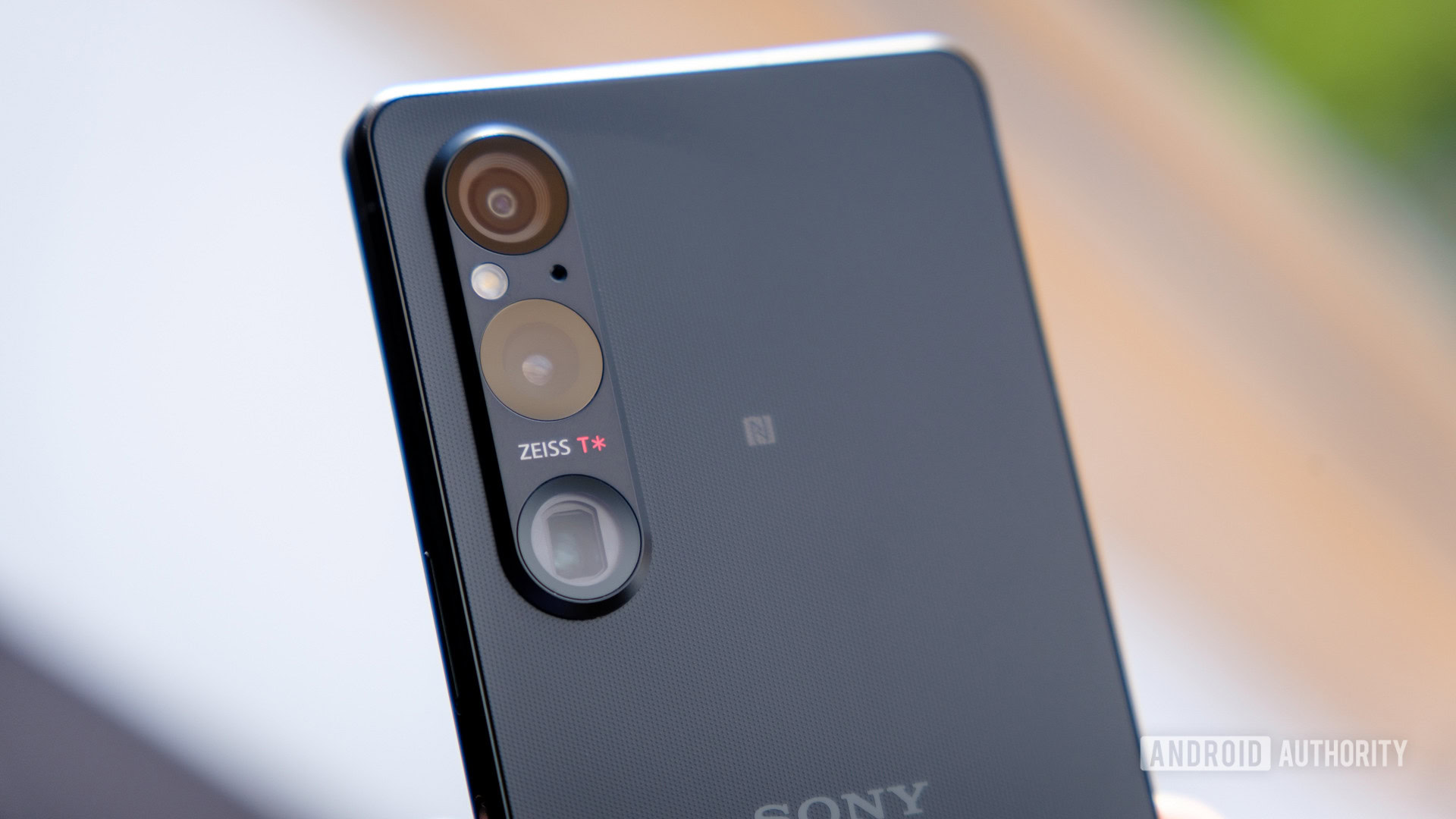
Of course, it’s not as if Android phones can’t capture great video. Devices like the Xperia 1 V and Xiaomi 13 Ultra do exist with extensive manual controls and Dolby Vision video recording. However, Android phones gatekeep these features behind extortionate price points, complex interfaces, and professional modes that would require a crash course in videography to figure out. The iPhone makes it more accessible, more affordable, and generally just better.
It’s astounding to me that unless I strap on a lens worth a few thousand dollars and spend hours color grading video footage, videos shot on my three-year-old $3000 camera come nowhere close to a modern iPhone. I’m not talking about specific scenarios like shooting film-noir footage in the dead of night. No phone can compete there. But my iPhone has quickly become my go-to for everyday use and even some semi-creative YouTube work. On the other hand, my mirrorless camera can’t even record HDR video; forget about 10-bit ProRes footage.
The best camera is the one in your pocket, and the iPhone's video capabilities make it one of the best options for budding videographers.
Still, Apple’s approach isn’t perfect — far from it, in fact. The latest iPhone 15 and iPhone 15 Plus continue to include a bare minimum USB 2.0 speed despite the addition of the USB-C port, making transferring files a frustrating experience. The Pro variants do not have a USB 3.0 cable in the box — a minor but notable detriment for filmmakers just starting out. However, despite those omissions and setbacks, the iPhone 15 series is still comfortably in the lead when it comes to video in all of its aspects.
The best camera is the one you have in your pocket, and the iPhone 15 Pro’s steps towards making mobile footage even better is a welcome move. One that I hope spurs Android smartphones to improve outside of niche circles.